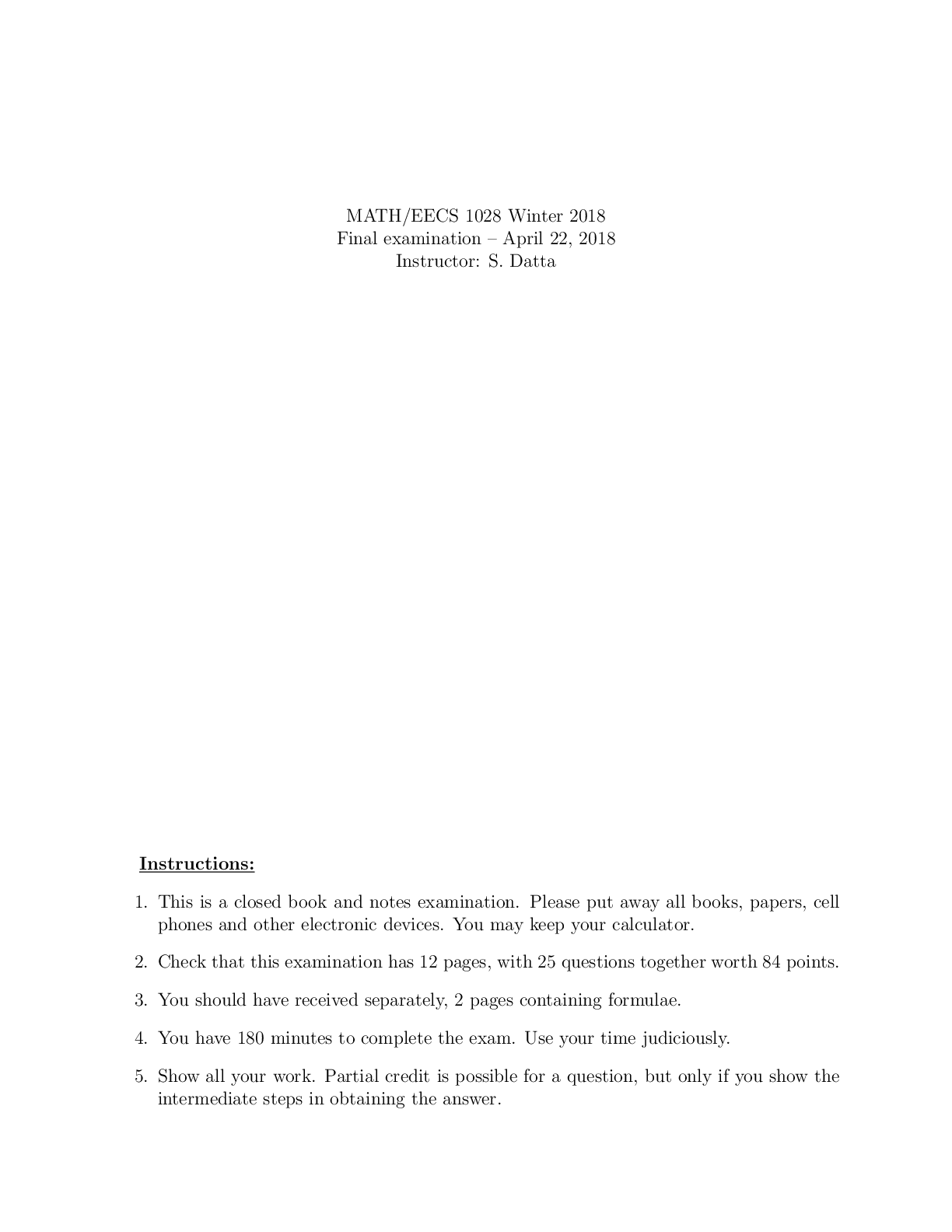Business Administration > EXAM > Questions > OPERATIONS 101 Practice 3_Questions. Practice problems on Queuing Theory. (All)
Questions > OPERATIONS 101 Practice 3_Questions. Practice problems on Queuing Theory.
Document Content and Description Below
Problem 1 Five executives share the services of a typing pool. The average number of jobs submitted for typing is six per day per executive and a job takes 15 minutes on average to type. Evaluate t... he situation, by first describing the performance measures of possible interest; and computing appropriate performance measures. A day consists of 8 hours. Assume that the arrivals over any period of time are Poisson distributed and that the service time per job is exponentially distributed. Problem 2 Kristen offers lunch specials on weekends. (This has nothing to do with the cookie business). She manages the weekend business by herself. On a typical weekend she receives on the average about 6 orders per hour. It takes Kristen on the average 7.5 minutes to prepare and box an order (this time is the service time and does not include the waiting time of the customer.) Kristen’s profit per order is $3. Assume that the arrival process of orders follows a Poisson distribution and that the time to fill an order is exponentially distributed. (a) What is the arrival rate and what is the service rate in this example? (b) What is the average time that a customer has to wait (from placing an order to getting it filled)? (c) Based on talking to customers, Kristen realizes that the waiting times her customers experience could have a long term impact on her business. She believes that if the average waiting time (from placing an order to getting it filled) of a customer is x minutes, the impact on the net present value (NPV) of her business is (- 1000 x)$. That is if she reduces the average waiting time by one minute, somehow, the NPV increases by $1000. Kristen has an option of investing in some resource that will help her reduce the “prepare and box” time from 7.5 minutes per order on an average to 6 minutes per order on an average. The time is still exponentially distributed. What is the maximum amount Kristen should be willing to pay for this resource (assume there is no maintenance costs etc.)? Problem 3 There are two streams of customers arriving independently at a supermarket: “Express” customers arrive at a rate 70 per hour, and stay on average 10 minutes within the shop. Each of them spend on average $25. “Regular” customers arrive at a rate 40 per hour. They stay within the shop for 30 minutes, spending $80 (on average). (a) What is the average number of “express” customers in the supermarket, at a given moment of time? What is the expected total number of customers at the supermarket, at a given moment of time? (b) What is the average revenue per hour? [Show More]
Last updated: 2 years ago
Preview 1 out of 9 pages

Buy this document to get the full access instantly
Instant Download Access after purchase
Buy NowInstant download
We Accept:

Reviews( 0 )
$4.00
Can't find what you want? Try our AI powered Search
Document information
Connected school, study & course
About the document
Uploaded On
Jan 08, 2023
Number of pages
9
Written in
Additional information
This document has been written for:
Uploaded
Jan 08, 2023
Downloads
0
Views
91







.png)


.png)



